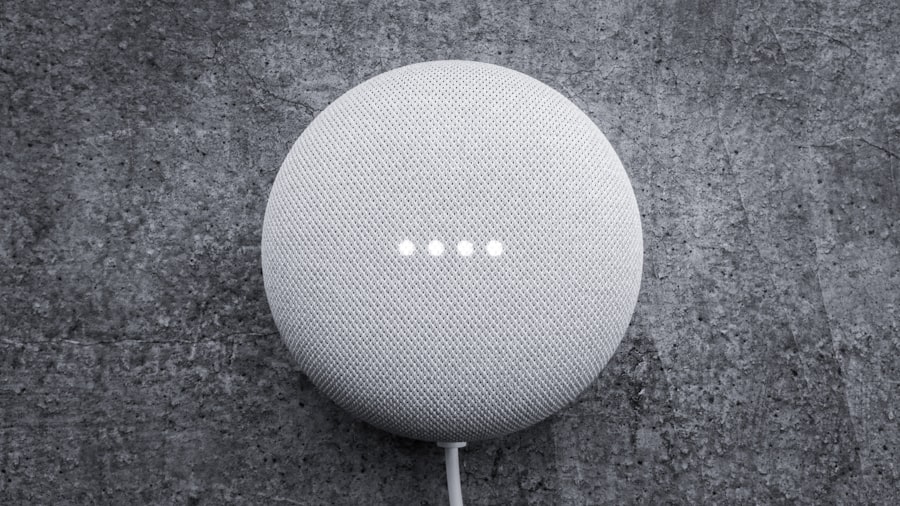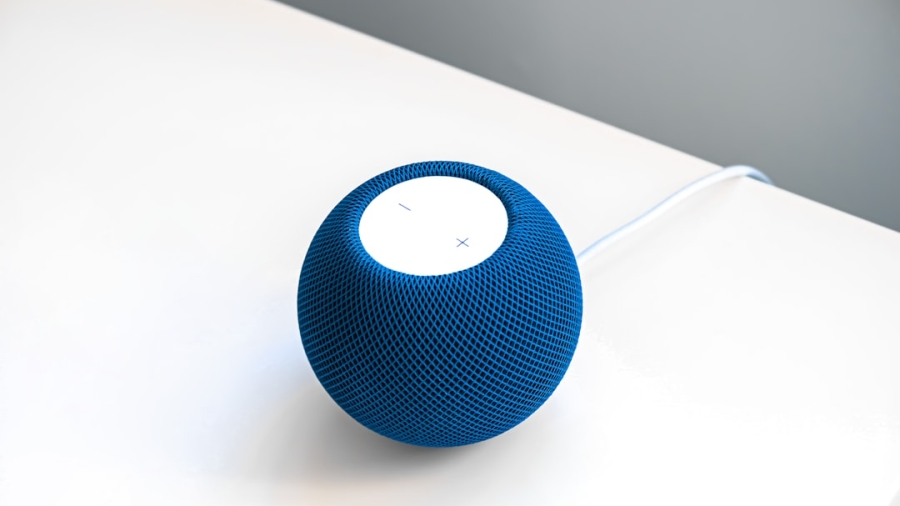Voice technology, also known as voice recognition or speech recognition technology, is a rapidly advancing field that enables users to interact with electronic devices through spoken commands. This technology has existed for decades, but recent advancements in artificial intelligence and natural language processing have significantly improved its accuracy and accessibility. Voice technology is now integrated into various devices, including smartphones, smart speakers, and automobiles.
The primary objective of voice technology is to make human-machine interaction more natural and intuitive. Rather than typing or tapping on a keyboard or touchscreen, users can simply speak to their devices to accomplish tasks. This has the potential to revolutionize our interaction with technology, making it easier and more convenient for people of all ages and abilities to access information, perform tasks, and control their devices.
As voice technology continues to evolve, it is expected to become an increasingly integral part of our daily lives, impacting areas such as search, e-commerce, content consumption, and user experience.
Key Takeaways
- Voice technology is revolutionizing the way we interact with devices and access information, making it more convenient and efficient.
- Voice technology is changing the landscape of search by providing more conversational and natural language queries, leading to more accurate and relevant results.
- E-commerce is being transformed by voice technology, with more consumers using voice assistants to make purchases and access product information.
- Content consumption is becoming more accessible and hands-free with the integration of voice technology, allowing users to consume content while multitasking.
- Voice technology is enhancing user experience by providing a more personalized and intuitive interaction with devices and applications.
The Impact of Voice Technology on Search
The Evolution of Search Queries
One of the key differences between voice search and traditional text-based search is the way people phrase their queries. When typing, people tend to use short, concise keywords, whereas when speaking, they are more likely to use natural language and ask complete questions. This means that businesses need to optimize their content for long-tail keywords and conversational phrases in order to rank well in voice search results.
Optimizing for Voice Search Results
Additionally, voice search results are often delivered verbally by virtual assistants, which means that businesses need to focus on getting featured snippets and other prominent placements in order to capture the attention of voice search users.
Adapting to the New Landscape
Overall, voice technology is changing the way people search for information online, and businesses need to adapt their SEO and content strategies accordingly in order to remain competitive in this new landscape.
Voice Technology and E-commerce

Voice technology is also having a significant impact on the e-commerce industry. With the rise of smart speakers and virtual assistants, more and more people are using voice commands to shop online. This trend has led to the development of voice-activated shopping experiences, where users can browse products, add items to their cart, and make purchases entirely through spoken commands.
For e-commerce businesses, this presents both opportunities and challenges. On one hand, voice technology opens up new channels for reaching customers and making sales. On the other hand, it requires businesses to rethink their user interfaces and customer experiences in order to accommodate voice commands.
Additionally, voice-activated shopping experiences raise concerns about security and privacy, as users may be hesitant to make purchases through a device that is always listening. Despite these challenges, many e-commerce businesses are embracing voice technology as a way to stay ahead of the curve and provide a more convenient shopping experience for their customers. As voice technology continues to improve, it is likely that voice-activated shopping will become an increasingly important part of the e-commerce landscape.
Voice Technology and Content Consumption
Voice technology is also changing the way people consume content. With the rise of smart speakers and virtual assistants, more and more people are using voice commands to access news, entertainment, and other forms of media. This trend has led to the development of voice-optimized content, which is designed to be easily consumed through spoken commands.
For content creators and publishers, this presents both opportunities and challenges. On one hand, voice technology opens up new channels for reaching audiences and delivering content in innovative ways. On the other hand, it requires content creators to rethink their formats and delivery methods in order to accommodate voice commands.
Additionally, voice-optimized content raises concerns about discoverability and monetization, as traditional advertising models may not translate well to a voice-first environment. Despite these challenges, many content creators are embracing voice technology as a way to stay relevant and provide a more engaging experience for their audiences. As voice technology continues to improve, it is likely that voice-optimized content will become an increasingly important part of the media landscape.
Voice Technology and User Experience
Voice technology has a significant impact on user experience across a wide range of devices and applications. By allowing users to interact with technology through spoken commands, voice technology makes it easier and more convenient for people of all ages and abilities to access information, perform tasks, and control their devices. This has the potential to revolutionize the way we interact with technology, making it more natural and intuitive.
One of the key benefits of voice technology is its ability to provide hands-free interaction, which is particularly valuable in situations where users are unable to use their hands or eyes. For example, people with disabilities or injuries may find it easier to use voice commands to control their devices, while drivers can use voice technology to access information without taking their eyes off the road. Additionally, voice technology can provide a more seamless multi-modal experience, allowing users to switch between voice commands and other input methods as needed.
Overall, voice technology has the potential to improve user experience across a wide range of applications, making it easier for people to access information, perform tasks, and control their devices in a natural and intuitive way.
The Future of Voice Technology

Smart Home Devices of the Future
One area where we can expect to see significant growth is in the development of voice-activated smart home devices. As more and more household appliances become connected to the internet of things (IoT), voice commands will become an increasingly important way for people to control their homes.
Advancements in Virtual Assistants
Additionally, we can expect to see continued improvements in virtual assistants and other voice-activated interfaces, making it easier for people to access information and perform tasks through spoken commands.
A Promising Future Ahead
Overall, the future of voice technology looks promising, with continued advancements driving innovation in this rapidly evolving field. As voice recognition becomes more accurate and accessible, we can expect to see even greater integration of voice technology into our daily lives.
Challenges and Limitations of Voice Technology
While voice technology holds great promise for improving the way we interact with technology, it also presents a number of challenges and limitations that need to be addressed. One of the key challenges is accuracy, as current voice recognition systems are not always able to accurately understand spoken commands, especially in noisy environments or with accents or dialects that differ from the training data. Another challenge is privacy and security, as voice-activated devices are always listening for commands, raising concerns about data collection and potential breaches of privacy.
Additionally, there are concerns about accessibility, as not all users may be able to use voice commands due to disabilities or other limitations. Furthermore, there are limitations in terms of functionality and compatibility with different languages and dialects. Voice recognition systems may not be able to accurately understand or respond to commands in languages other than those they were trained on.
Despite these challenges and limitations, ongoing research and development in the field of voice technology are working towards addressing these issues in order to make voice recognition systems more accurate, secure, accessible, and compatible with a wide range of languages and dialects. In conclusion, voice technology is rapidly advancing field that has the potential to revolutionize the way we interact with technology across a wide range of applications. From search and e-commerce to content consumption and user experience, voice technology is changing the way we access information, perform tasks, and control our devices.
While there are challenges and limitations that need to be addressed, ongoing advancements in artificial intelligence and natural language processing are driving innovation in this rapidly evolving field. As voice recognition becomes more accurate and accessible, we can expect to see even greater integration of voice technology into our daily lives in the future.
In exploring how voice technology is revolutionizing user interactions with the web, it’s also essential to consider the hardware that supports these advancements. A related article that delves into this aspect is a review of the Samsung Galaxy Chromebook 2, which you can read here. This article highlights the features of the Chromebook that enhance user experience, including its compatibility with voice-activated services, making it an excellent example of how modern devices are adapting to new technologies for more intuitive user interactions.
FAQs
What is voice technology?
Voice technology refers to the use of speech recognition and natural language processing to enable users to interact with devices and applications using their voice.
How is voice technology changing user interaction with the web?
Voice technology is changing user interaction with the web by allowing users to perform tasks such as searching, browsing, and accessing information using voice commands instead of traditional input methods like typing.
What are the benefits of voice technology for web users?
The benefits of voice technology for web users include hands-free interaction, increased accessibility for users with disabilities, and the ability to perform tasks more quickly and efficiently.
What are some examples of voice technology on the web?
Examples of voice technology on the web include voice-activated virtual assistants like Siri, Alexa, and Google Assistant, as well as voice search features on search engines and websites.
What are the challenges of implementing voice technology on the web?
Challenges of implementing voice technology on the web include ensuring accuracy of speech recognition, addressing privacy concerns related to voice data, and designing user interfaces that are intuitive and easy to use.

